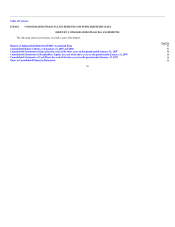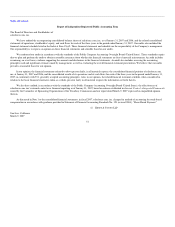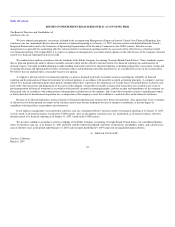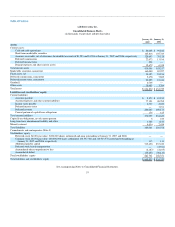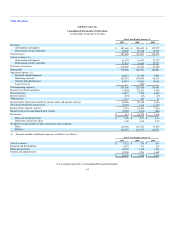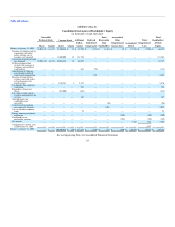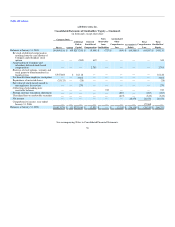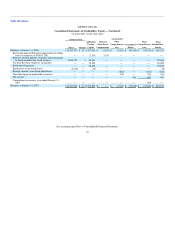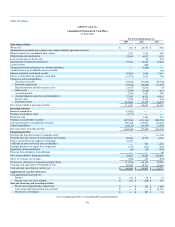Salesforce.com 2006 Annual Report Download - page 52
Download and view the complete annual report
Please find page 52 of the 2006 Salesforce.com annual report below. You can navigate through the pages in the report by either clicking on the pages listed below, or by using the keyword search tool below to find specific information within the annual report.
Table of Contents
and the continuing market acceptance of our services. To the extent that available funds are insufficient to fund our future activities, we may need to raise
additional funds through public or private equity or debt financing.
During fiscal 2008, we may enter into arrangements to acquire or invest in other businesses, services or technologies. While we believe we have
sufficient financial resources to take these actions, we may be required to seek additional equity or debt financing. Additional funds may not be available on
terms favorable to us or at all.
Recent Accounting Pronouncements
In June 2006, the Financial Accounting Standards Board ("FASB") issued FASB Interpretation No. 48, Accounting for Uncertainty in Income Taxes,
("FIN 48"), which clarifies the accounting for uncertainty in income taxes recognized in an enterprise's financial statements and prescribes a recognition
threshold of whether it is more likely than not that a tax position will be sustained upon examination. Measurement of the tax uncertainty occurs if the
recognition threshold has been met. FIN 48 also provides guidance on the recognition, classification, interest and penalties, accounting in interim periods,
disclosure, and transition. FIN 48 will be effective for fiscal years beginning after December 15, 2006. We are currently evaluating what impact, if any, the
adoption of FIN 48 will have on our financial position and results of operations.
In September 2006, the FASB issued SFAS No. 157, Fair Value Measurements ("SFAS No. 157"). The purpose of SFAS No. 157 is to define fair
value, establish a framework for measuring fair value and enhance disclosures about fair value measurements. The measurement and disclosure requirements
are effective beginning in the first quarter of fiscal 2009. We are currently assessing whether adoption of SFAS No. 157 will have an impact on our financial
statements.
ITEM 7A. QUANTITATIVE AND QUALITATIVE DISCLOSURES ABOUT MARKET RISK
Foreign currency exchange risk
Our results of operations and cash flows are subject to fluctuations due to changes in foreign currency exchange rates, particularly changes in the Euro,
British Pound Sterling, Canadian dollar, Japanese Yen and Australian dollar. We seek to minimize the impact of certain foreign currency fluctuations by
hedging certain balance sheet exposures with foreign currency forward and option contracts. Any gain or loss from settling these contracts is offset by the loss
or gain derived from the underlying balance sheet exposures. The hedging contracts by policy have maturities of less than three months and settle before the
end of each quarterly period. Additionally, by policy, we do not enter into any hedging contracts for trading or speculative purposes.
Interest rate sensitivity
We had cash, cash equivalents and marketable securities totaling $412.5 million at January 31, 2007. These amounts were invested primarily in money
market funds and instruments, corporate notes and bonds, government securities and other debt securities with strong credit ratings. The cash, cash
equivalents and short-term marketable securities are held for working capital purposes. We do not enter into investments for trading or speculative purposes.
Our fixed-income portfolio is subject to interest rate risk. An immediate increase or decrease in interest rates of 100-basis points could result in a $2.8
million market value reduction or increase of the same amount. This estimate is based on a sensitivity model that measures market value changes when
changes in interest rates occur. Fluctuations in the value of our investment securities caused by a change in interest rates (gains or losses on the carrying
value) are recorded in other comprehensive income, and are realized only if we sell the underlying securities.
At January 31, 2006, we had cash, cash equivalents and marketable securities totaling $296.8 million. The fixed-income portfolio was also subject to
interest rate risk. Changes in interest rates of 100-basis points would have resulted in market value changes of $1.6 million.
49













